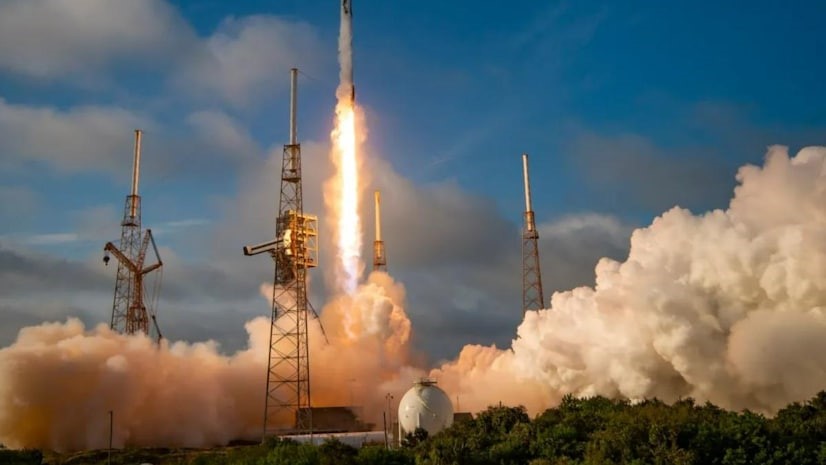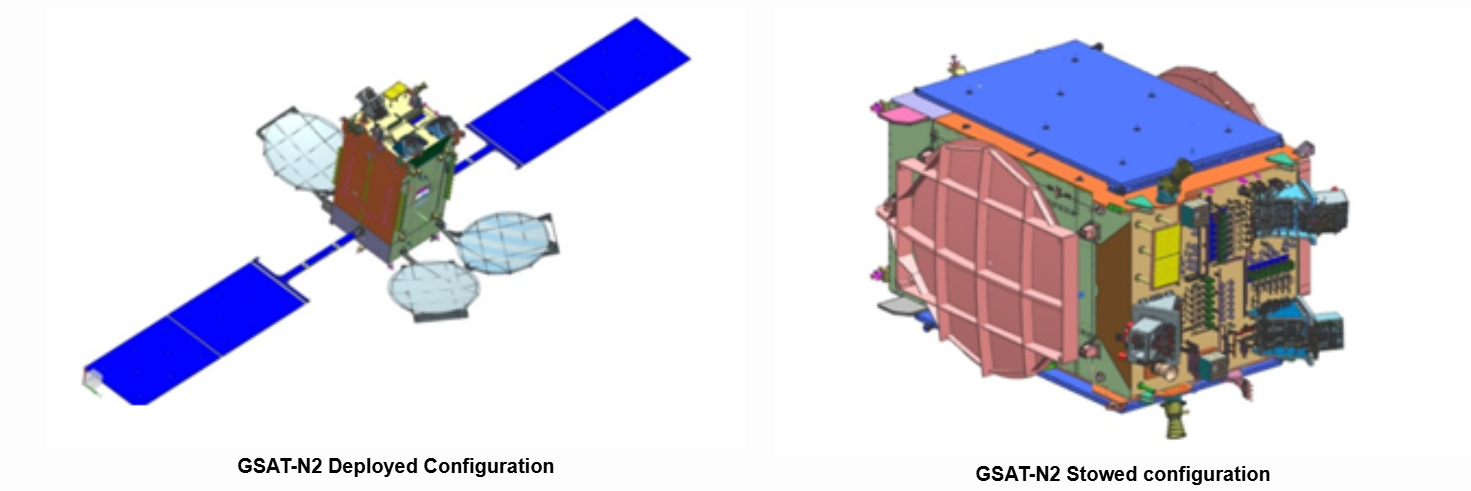
Search Assignments
Our Experts

Search Assignments

Customers Reviews
ISRO’s commercial space industry, NSIL (New Space India Ltd) is set to launch the new satellite on 19th Nov2024 named as “GSAT-20(GSAT-N2)” with the collaboration of Space X from the launch site situated in Cape Canaveral, Florida.
The launch of satellite is a significant event from India’s perspective.
GSAT-20 is a heavy class GSAT series communication satellite with most advanced Ka-band. It is also reported to be one of the heaviest satellites ever launched by India with a launch mass of 4700Kg, it is operated by 2 solar powered batteries and has a unique architecture model using special “Spot Beams”. The beams are dedicated to provide extremely high-speed data transfer of 48Gbps thru HTS (High throughput Satellite).
The Satellite is aimed to provide internet connectivity during flight and remote locations. Thus, it is equipped with total of 32 spot beams with 2 polarization making it 64 beams in which 8 narrow beams are dedicated to north-east region and 24 wide beams are for other parts of India including Andaman and Lakshadweep island.
The satellite is going to be launched thru Space X’s famous rocket Falcon 9, which is specialized in transporting humans and heavy payloads with ease, now this is going to be first time for India to collaborate with Space X for launching their satellite and below is the reason why India took help from Space X.
India has its own transport rocket known as LVM 3 which is used to carry heavy satellite and initially India’s plan was to send their satellite thru this rocket only but later on it was found that the satellite has exceeded the payload capacity by 700 Kg. So India approached France’s Arianespace to launch their heavy satellite thru Ariane-5 but it got retired and France is working on Ariane-6 which got a delayed launch. Eventually NSIL signed Rs 500Cr contract with Space X, marking it the first time for India to use Falcon 9 rocket for the satellite launch.

GSAT-20 which is the second satellite to be handled by NSIL is responsible for providing internet service during flight which was not possible before and international flights whenever used to enter Indian airspace needed to shut down the internet access as it was not allowed. Once the GSAT gets deployed and becomes active it will enable the flight and telecommunication companies to get access to the internet, although they need to register themselves for the license first.
GSAT’s another mission is to provide internet connectivity to remote locations where internet service is not available, parts of north-east and pan India coverage including Andaman-Nicobar And Lakshadweep Island are expected.
Currently only in US in-flight internet connectivity is available thru ViaSat Inc. The downside of the satellite is it’s only capable of transferring 100Mb/s data (GSAT-20 is capable of transferring 48Gb/s) which hardly results in 10-15Mb/s data per passenger. In a survey it was found that passenger are more disappointed because of high cost of data and poor internet connectivity, although US is working on improving their satellite and Space X has also partnered with some airline companies, i.e. Hawaiian Airline to provide internet service thru their satellite called ‘Starlink’.
Other Countries don’t have the in-flight internet connectivity so they instead use Wi-Fi service which offers the passenger internet service at paid basis. In India some airlines are equipped with Wi-Fi service for example Vistara and Air India started Wi-Fi service but is limited to international flights only as passengers are not willing to pay the premium price.
Due to the budget constraints also, domestic airlines are still not equipped with Wi-Fi connectivity but now with the launch of this satellite, passengers will be able to access the internet for free. So India will be among those few countries to have internet service in-flight.
GSAT-20 is the most advanced satellite in the series so far, it is built on 1-6K unified modular bus and the first satellite to have fully electric propulsion which makes it 5-6 times more efficient than the traditional chemical propulsion.
It is made up of carbon fiber reinforced polymer powered by 2 solar panels with capacity of producing 6 KWh of electricity and storage unit contains Li-ion batteries to store electricity. The launch mass is 4700 Kg and the expected mission duration is of 14 years.

The payload consists of three 2.5-meter parabolic deployable reflectors, equipped with multiple feeds that generate 32 spot beams across the Indian region using a single feed configuration for each beam.( Source: https://www.isro.gov.in/GSATN2EnhancingIndiaBroadbandInfrastructure.html )
With the launch of GSAT-20 it will bring significant changes to broadband connectivity and will close the gap between the internet services provided in in-flight within India. For passengers commuting thru flights will be able to use the internet freely without losing network once the telecommunication companies get the green signal. For Indian scientists it is going to be a revolutionary change as it will be the first time an electric propulsion satellite is going to position itself in the geostationary orbit.
For ISRO and NSIL it’s the first time working together with Space X on a satellite mission, ISRO chief said that this contract will pave a new path to the future and they are looking forward to work together in many upcoming projects too.
On tomorrow midnight 12:01AM, falcon 9 will be launched in the earth’s orbit, the countdown has begun and space enthusiasts are waiting patiently to watch the rocket fly again.




No Comments